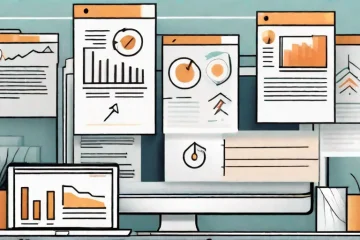Having a good credit score can open doors to financial opportunities like getting approved for loans, credit cards, or even securing a better rental agreement. But what if you’re starting from scratch or trying to recover from past mistakes? Don’t worry—building credit takes time, but it’s entirely possible with the right steps.
In this blog, we’ll guide you step-by-step through the process of building credit from the ground up.
What Is Credit and Why Does It Matter?
Credit is your ability to borrow money and pay it back on time. When you use credit responsibly, lenders and creditors trust you more. This trust is measured as your credit score, which is a three-digit number that reflects your financial habits.
Why Does Good Credit Matter?
- Access to Loans and Credit Cards: A good score helps you qualify for loans with better terms and lower interest rates.
- Better Renting Opportunities: Many landlords check credit scores before renting.
- Savings on Insurance: Some insurers offer lower rates to people with high credit scores.
- Job Opportunities: Some employers check credit as part of their hiring process.
Step 1: Understand Your Credit Score
Your credit score is calculated based on five main factors:
- Payment History (35%): Paying your bills on time is the most important factor.
- Credit Utilization (30%): This is the amount of credit you use compared to your total limit.
- Length of Credit History (15%): The longer you’ve had credit accounts, the better.
- Credit Mix (10%): Having a variety of credit types, like credit cards and loans, helps.
- New Credit (10%): Applying for too much credit in a short time can hurt your score.
You can check your credit score for free through services like Credit Karma or by reviewing your credit card issuer’s tools.
Step 2: Start Small with a Secured Credit Card
If you’re new to credit, a secured credit card is an excellent starting point.
What is a Secured Credit Card?
A secured card requires a cash deposit as collateral. For example, if you deposit $300, your credit limit is $300.
How to Use It Responsibly:
- Make small purchases, such as gas or groceries.
- Pay off the balance in full every month to avoid interest charges.
- Keep your credit utilization below 30%. For instance, if your limit is $300, try not to spend more than $90.
Step 3: Become an Authorized User
Another way to build credit is to become an authorized user on someone else’s credit card.
How It Works:
- A trusted family member or friend adds you to their credit card account.
- Their good credit habits can help boost your credit score.
What to Keep in Mind:
- Ensure they have a good payment history and low credit utilization.
- You don’t even need to use the card yourself to benefit from their positive credit history.
Step 4: Pay Bills on Time
Paying bills on time is crucial for building credit. Even bills like utilities, rent, or phone plans can impact your credit score if they’re reported to credit bureaus.
Tips for Staying on Track:
- Set up automatic payments or reminders.
- Prioritize paying the minimum balance due if you can’t pay in full.
Step 5: Monitor Your Credit Report
Mistakes on your credit report can drag down your score. That’s why it’s essential to review your credit report regularly.
How to Check Your Credit Report:
- Use AnnualCreditReport.com to get one free report from each of the three major bureaus (Equifax, Experian, TransUnion) every year.
- Look for errors like incorrect balances or accounts you don’t recognize.
If you find a mistake, dispute it with the credit bureau to have it corrected.
Step 6: Avoid Common Pitfalls
When building credit, some habits can hurt your progress. Avoid these:
- Applying for Too Many Cards at Once: Each application results in a hard inquiry, which can lower your score.
- Carrying a High Balance: High balances increase your credit utilization, which negatively affects your score.
- Closing Old Accounts: Even if you don’t use a card, keeping it open helps with your credit history length.
Step 7: Graduate to Unsecured Credit Cards
Once you’ve built a track record with a secured card or as an authorized user, you may qualify for an unsecured credit card.
What’s Different About Unsecured Cards?
- They don’t require a deposit.
- They often have higher credit limits and better rewards.
How to Choose the Right Card:
- Look for a card with no annual fee.
- Consider rewards programs if you plan to use the card for everyday spending.
Step 8: Practice Patience
Building credit takes time. Don’t get discouraged if your score doesn’t improve overnight. By consistently following these steps, you’ll see positive changes.
Want to boost your website’s authority? Consider HARO link building.
Final Thoughts
Building credit is one of the smartest financial decisions you can make. Whether you’re starting fresh or rebuilding, these steps provide a solid foundation for a strong credit score.
With good credit, you’ll gain access to better financial opportunities and greater peace of mind. Start today, and your future self will thank you!
Now that you know the steps, take action to build and maintain a strong credit score. It’s not just about numbers—it’s about creating a brighter financial future.



